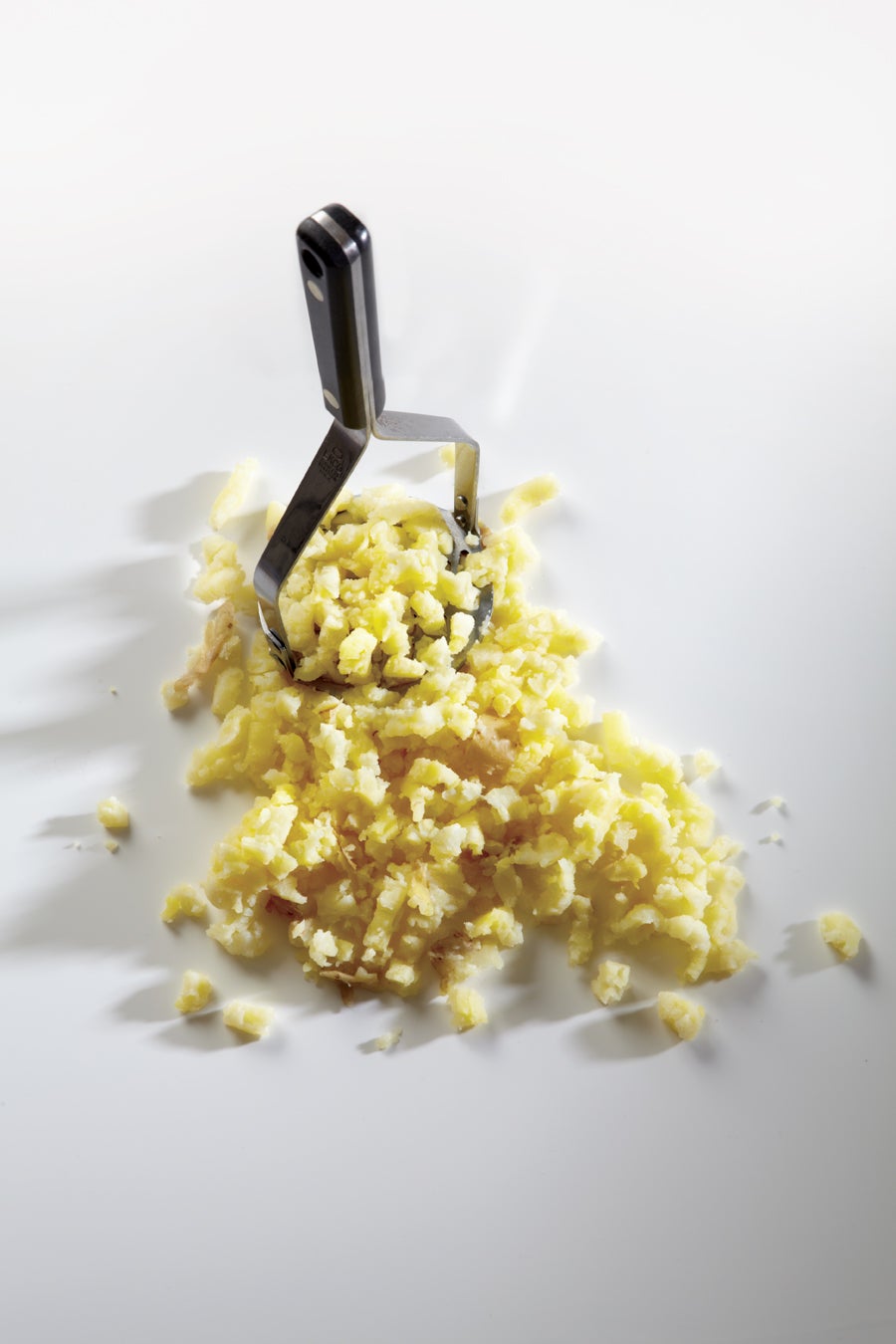Best Tools for Mashing Potatoes

Quick, easy, and oh-so-satisfying, mashed potatoes are a holiday must-have. From grandma’s recipe to gourmet versions (with all the creamy-smooth and chunky-thick variations in between), a few rules and tools can make all the difference in how a mashed-potato recipe turns out.
3 Tips for Success
1.Choose high- or medium-starch potatoes such as russet, Yukon gold, Dutch yellow, and purple potatoes. Low-starch potatoes tend to contain more moisture and can get sticky when mashed.
2. Don’t overmash. Too much mashing or mixing can make potatoes gummy. Never mash potatoes in a food processor.
3.Warm up add-ins such as milk or butter before mixing them into potatoes. This keeps the potatoes piping hot and prevents overmixing.
Tools of the Trade
Potatoes can be mashed with everything from a spoon to a food mill. Here, a roundup of what each tool can do.
Tool Wooden Spoon
Best for Chunky smashed and skin-on mashed potatoes.
Tool Potato masher
Best for Fluffy mashed potatoes that still have some texture.
Tool Potato ricer
Best for Velvety smooth and creamy potatoes.
Tool Food mill
Best for Large batches of ultrasmooth potatoes. Potatoes need not be added one by one.
Tool Handheld electric mixer
Best for Whipped potato recipes that call for lots of added fat and liquid.
DIY: Awesome Add-Ins Whip up your own mashed potato creations with these inspired additions.
Olive oil, truffle oil, garlic oil, nut/seed oils
Buttermilk, ricotta, cottage, or cream cheese
Prepared pesto, horseradish, or mustard
Chopped fresh herbs such as parsley, cilantro, rosemary, basil, thyme
Lemon zest
Roasted garlic
Caramelized onions
Steamed, chopped greens such as spinach, Swiss chard, kale, or cabbage
Minced chipotle chiles in adobo sauce wasabi paste